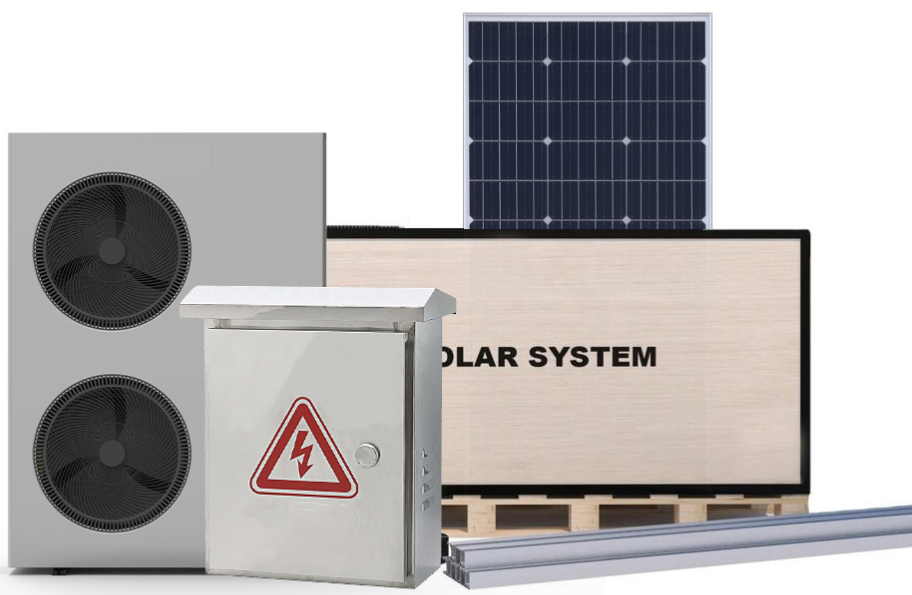Techniques To Improve Bifacial Solar Module
Performance In Outdoor Environments
By Mohan Gupta 16th June 2023
Representational image. Credit: Canva
Significant attention has been paid to bifacial solar modules as a possible technique to increase solar energy production. Bifacial modules are much more effective in outdoor settings than typical monofacial modules because they can gather sunlight from both the front and the back. But to properly utilize the potential of bifacial solar modules, it’s essential to comprehend their behaviour and improve their performance under actual usage scenarios. To increase the effectiveness and dependability of bifacial solar modules in outdoor environments, this article explores the significance of utilizing measurements and modeling methodologies. We may learn more about maximizing energy yield, perfecting system design, and promoting the use of cutting-edge solar technology by examining the interaction between precise measurements, performance assessment, and sophisticated modeling methodologies.
A thorough comprehension of bifacial solar modules’ behaviour in actual situations is necessary to maximize their effectiveness in outdoor settings. Here, the use of precise measurements and sophisticated modeling methods is essential. Researchers, engineers, and other solar industry participants can use these technologies to fully realize the potential of bifacial solar modules and increase their energy output.
To evaluate the performance of bifacial solar modules in actual outdoor conditions, precise measurements are essential. The bifaciality factor, which rates the module’s capacity to produce power from both sides, is one of the crucial measures. The quantity of sunlight absorbed by the module’s rear side in comparison to its front side is measured to establish this factor. Additionally, devices like thermographic imaging can aid in the early detection of potential problems like cell-level hotspots or module flaws, enabling maintenance and repair.

Measurements of ground albedo are also crucial for enhancing the efficiency of bifacial solar modules. Albedo is a term used to describe how reflective the ground or nearby surfaces are. Designers can calculate the amount of sunlight reflected onto the rear side of the modules by precisely measuring the albedo. With the help of this knowledge, systems may be designed properly, assuring the best possible module placement and arrangement to maximize energy capture.
Advanced modeling approaches offer a potent tool for forecasting the performance of bifacial solar modules in addition to measurements. Experts can simulate the interaction between sunlight, the module, and the environment through ray-tracing simulations and 3D modeling. These models provide precise forecasts of the bifacial gain—the additional energy captured by the rear side of the module—by taking into account several variables, including the location of the sun, the topography, and the effects of shading. Designers can determine the most effective layout by examining these models, which allows them to compare various installation designs, module orientations, and ground cover characteristics.
Stakeholders in the solar business can spot performance bottlenecks and put improvement plans into place by combining precise measurements with sophisticated modeling approaches. For instance, it is possible to maximize energy capture while minimizing shading losses by optimizing the module tilt angle based on modeling projections. The choice of appropriate installation locations is made easier when one is aware of the effects of ground cover qualities and albedo. Additionally, modeling can help in the design of efficient cleaning techniques because dirt on the back of bifacial modules can have a substantial effect on performance.
Other important factors to improve the performance of Bifacial modules include:
Also Read Renewable Energy Giant LONGi Offers More Than Green Tech Solutions
Understanding Bifacial Solar Modules:
Bifacial solar modules are different from conventional monofacial solar modules in that they have a second transparent backside that enables them to collect light reflected from the surroundings or the ground. Understanding the numerous parameters that affect their energy yield is crucial for optimizing their performance. Albedo (reflectivity) of the ground, module tilt angle, height above ground, shading effects, and incident angle of light are some of these variables. Understanding these elements and creating the most effective bifacial solar systems depend on precise measurements and modeling methods.
Measurements for Performance Assessment:
For accurate evaluation and improvement, bifacial solar module performance must be measured in actual outdoor settings. The facility factor, which measures the module’s capacity to generate power from both sides, is one such measurement method. Advanced technologies like thermographic imaging can also reveal possible problems like module flaws or hotspots at the cell level. Devices for measuring ground albedo provide information on the reflectance of the immediate environment, assisting in system design and optimization. To understand module behaviour and calibrate models for precise predictions, these measurements offer crucial data.
Modeling Techniques for Performance Prediction:
For system design, energy yield estimate, and optimization, bifacial solar module performance modeling is crucial. The additional energy captured by the rear side of the module is known as the bifacial gain, and it may be predicted using a variety of modeling techniques, including ray-tracing simulations and 3D modeling. To produce precise projections of energy yield, sophisticated simulation software takes into account elements including terrain, shading effects, and solar position. To optimize performance, these models let designers assess various installation arrangements, module orientations, and ground cover characteristics.
Also Read Fraunhofer ISE Leads "Katana" Project to Develop Measurement Methods for Perovskite-Silicon Tandem Solar Cells
Improving Efficiency and Reliability:
It is possible to spot potential performance bottlenecks and put improvement and reliability measures in place by utilizing measurements and modeling approaches. For example, precise modeling can aid in optimizing the tilt angle of the module to increase energy capture and decrease shading losses. Finding the best places for installation is made easier by understanding the effects of ground cover characteristics and albedo. Additionally, as dirt on the back of bifacial modules can have a considerable impact on performance, modeling might help in the design of efficient cleaning procedures.
Conclusion:
The effectiveness of bifacial solar modules in outdoor conditions is greatly enhanced by the combination of measurements and modeling techniques. While modeling techniques allow for precise performance forecasts and the formulation of optimization strategies, accurate measurements offer useful information for evaluating module behavior and optimizing system architecture. By utilizing these techniques, solar industry participants may increase the effectiveness and dependability of bifacial solar systems, promoting the development of renewable energy sources and a sustainable future.
To learn more about photovoltaic power generation, please follow SOLARPARTS official website:
Twitter: Solarparts Instagram: Solarparts
Tumblr: Solarparts Pinterest: Solarparts
Facebook: Shenzhen Solarparts Inc
Email address: Philip@isolarparts.com
Homepage: www.isolarparts.com



